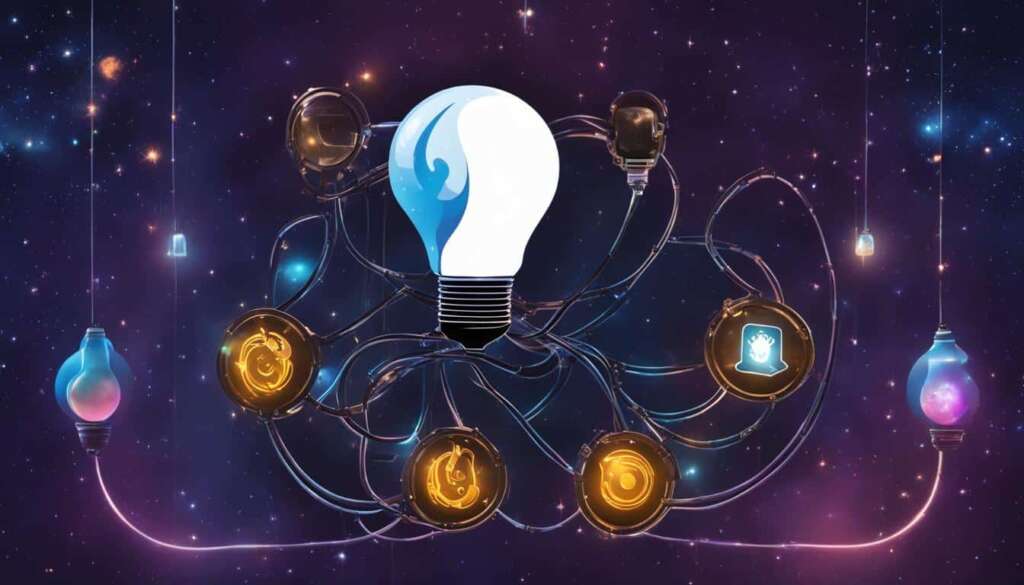Table of Contents
As a developer, integrating a language model like ChatGPT from OpenAI can greatly enhance your coding workflow. ChatGPT is an AI-powered tool that provides insights and collaboration tools for your projects. In this guide, we will delve into the GitHub ChatGPT integration, discussing how it can revolutionize your development process.
GitHub is a widely-used platform for version control and collaboration among developers. With the integration of ChatGPT, you can leverage its AI capabilities to streamline your coding workflow. By harnessing the power of natural language processing, ChatGPT can assist you in generating code, providing AI-powered insights, and collaborating with your team.
Imagine being able to effortlessly generate code snippets or complete a given prompt with the help of an AI language model. ChatGPT can do just that, making your coding process faster and more efficient. It can also offer AI-powered insights, suggesting alternative approaches, optimizations, or troubleshooting strategies, improving the overall quality of your code.
Furthermore, ChatGPT’s collaboration tools enable you to communicate with other developers, facilitate code reviews, and brainstorm ideas. Its conversational AI capabilities make it easier to connect with team members and discuss coding challenges or project requirements in a more natural and intuitive way.
In the next sections, we will provide you with an overview of ChatGPT and its capabilities, guide you through the process of using the ChatGPT API, and share best practices for integration. By the end of this guide, you’ll be equipped with the knowledge to harness the power of GitHub ChatGPT integration and take your coding workflow to new heights.
An Overview of ChatGPT and its Capabilities
ChatGPT, developed by OpenAI, is an advanced AI language model that offers a wide range of capabilities for text generation, text completion, question answering, and conversational AI. With its powerful algorithms, ChatGPT brings human-like text generation to various applications, making it a valuable tool for developers and businesses alike.
As an AI language model, ChatGPT can generate high-quality text based on a given prompt. Whether you need to generate creative content, provide informative responses, or create realistic chatbot dialogues, ChatGPT excels at producing coherent and fluent text that aligns with the context and intent of the prompt.
What sets ChatGPT apart is its ability to complete text prompts in a way that is contextually relevant and grammatically correct. This makes it ideal for scenarios where you need assistance in finishing sentences or expanding on ideas. By prompting the model with partial text, ChatGPT can intelligently fill in the missing information and deliver comprehensive responses.
Question answering is another area where ChatGPT shines. Leveraging its vast training data, the language model can provide accurate and informative answers to a wide range of questions. With its knowledge-based capabilities, developers can build applications that offer AI-powered insights and assist users in finding relevant information.
When it comes to conversational AI, ChatGPT enables the creation of natural and intuitive conversational interfaces. It can simulate human-like interactions, providing users with engaging and interactive experiences. Businesses can utilize ChatGPT to build chatbots, virtual assistants, and customer support systems that deliver personalized and responsive conversations.
“ChatGPT brings human-like text generation to various applications, making it a valuable tool for developers and businesses alike.”
Through its AI language model, ChatGPT empowers developers to enhance their applications with sophisticated language capabilities. Whether it’s text generation, completion, question answering, or conversational AI, ChatGPT offers a range of possibilities to transform and elevate user experiences.
How to Use the ChatGPT API and Integrate it into Your Projects
To integrate ChatGPT into your projects and make use of its powerful language generation capabilities, you will first need to obtain an API key from OpenAI. This key will grant you access to the ChatGPT API, allowing you to make requests and receive responses from the language model.
Once you have your API key, you can start making API requests to the ChatGPT endpoint. These requests are made by providing a prompt, which serves as the starting point for the text generation process. The API will then generate human-like text based on the given prompt and return the response to your application.
Integrating the ChatGPT API into your application is straightforward. You can utilize the API response to enhance the conversational experience for your users. Whether you’re building a chatbot, a language translation tool, or any other application that requires natural language processing, the ChatGPT API can be a valuable tool.
For example, in Python, you can use the requests library to send API requests to the ChatGPT endpoint. By following the step-by-step guide provided, you’ll learn how to structure your API requests and handle the responses effectively. This will enable you to seamlessly integrate ChatGPT into your projects and leverage its capabilities to create compelling conversational experiences for your users.
FAQ
What is ChatGPT?
ChatGPT is an advanced AI language model developed by OpenAI. It is designed to generate human-like text and can be used for various applications such as chatbots, language translation, and more.
What are the capabilities of ChatGPT?
ChatGPT has text generation capabilities, allowing it to produce coherent and fluent text based on a given prompt. It can also complete text prompts in a contextually relevant and grammatically correct way. Additionally, ChatGPT can answer questions based on its training data.
How can I use the ChatGPT API and integrate it into my projects?
To use the ChatGPT API, you will need to sign up for an API key from OpenAI. Once you have your API key, you can make API requests to the ChatGPT endpoint, providing a prompt for the language model to generate text based on. The API response can then be integrated into your application to provide conversational experiences for your users.
How do I get an API key for the ChatGPT API?
You can obtain an API key for the ChatGPT API by signing up with OpenAI. Visit their website or documentation for more information on how to sign up and obtain the API key.
Can ChatGPT be used for knowledge-based applications?
Yes, ChatGPT can answer questions based on its training data, making it useful for knowledge-based applications.
What programming language can I use to make API requests to the ChatGPT API?
You can make API requests to the ChatGPT API using any programming language that supports HTTP requests. Common choices include Python, JavaScript, and Ruby.
Are there any examples of using the ChatGPT API in Python?
Yes, the guide provides an example of a basic API request in Python using the requests library. It demonstrates how to make an API call to the ChatGPT endpoint and receive the generated text response.













